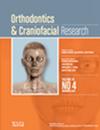Applications of Machine Learning in Image Analysis to Identify Craniosynostosis: A Systematic Review and Meta-Analysis
Abstract
Craniosynostosis is a condition characterised by the premature fusion of cranial sutures, which can lead to significant neurodevelopmental and aesthetic issues if not diagnosed and treated early. This study aimed to systematically review and conduct a meta-analysis of studies utilising machine learning (ML) models to diagnose craniosynostosis in photographs or radiographs from humans, evaluating their accuracy through sensitivity, specificity and diagnostic odds ratio. A comprehensive search was conducted on PubMed, Web of Science and Scopus until October 2024 regarding the following PECO question: ‘Should ML models (E) be used to diagnose craniosynostosis in photographs or radiographs from humans (P) compared to a reference standard (C) based on their sensitivity, specificity, and diagnostic odds ratio (O)?’. Studies employing ML to diagnose craniofacial deformities on photographs and radiographs of human subjects were included. Using Quality Assessment of Diagnostic Accuracy Studies (QUADAS-2), the risk of bias was assessed. A bivariate random-effect meta-analysis was conducted to pool the diagnostic odds ratio, sensitivity and specificity of the included studies. The GRADE approach was used to evaluate the overall strength of the clinical recommendation and estimated meta-evidence. An initial search yielded 685 articles. After screening, 47 articles were selected for a full-text review. Eventually, 28 studies were selected for the systematic review, and 17 were included in the meta-analysis. The results, with an overall moderate certainty, indicated an AUC of 0.99 (95% CI: 0.98–1.00), an overall sensitivity of 97% (95% CI: 94%–98%) and an overall specificity of 97% (95% CI: 94%–99%). The estimated pooled diagnostic odds ratio was 1131 (95% CI: 290–4419). The present study showed that the ML approaches possess high efficiency and applicability in the diagnosis of craniosynostosis in photographs or radiographs from humans. These findings affirm that ML models should be considered viable diagnostic tools for craniosynostosis.

 求助内容:
求助内容: 应助结果提醒方式:
应助结果提醒方式:


